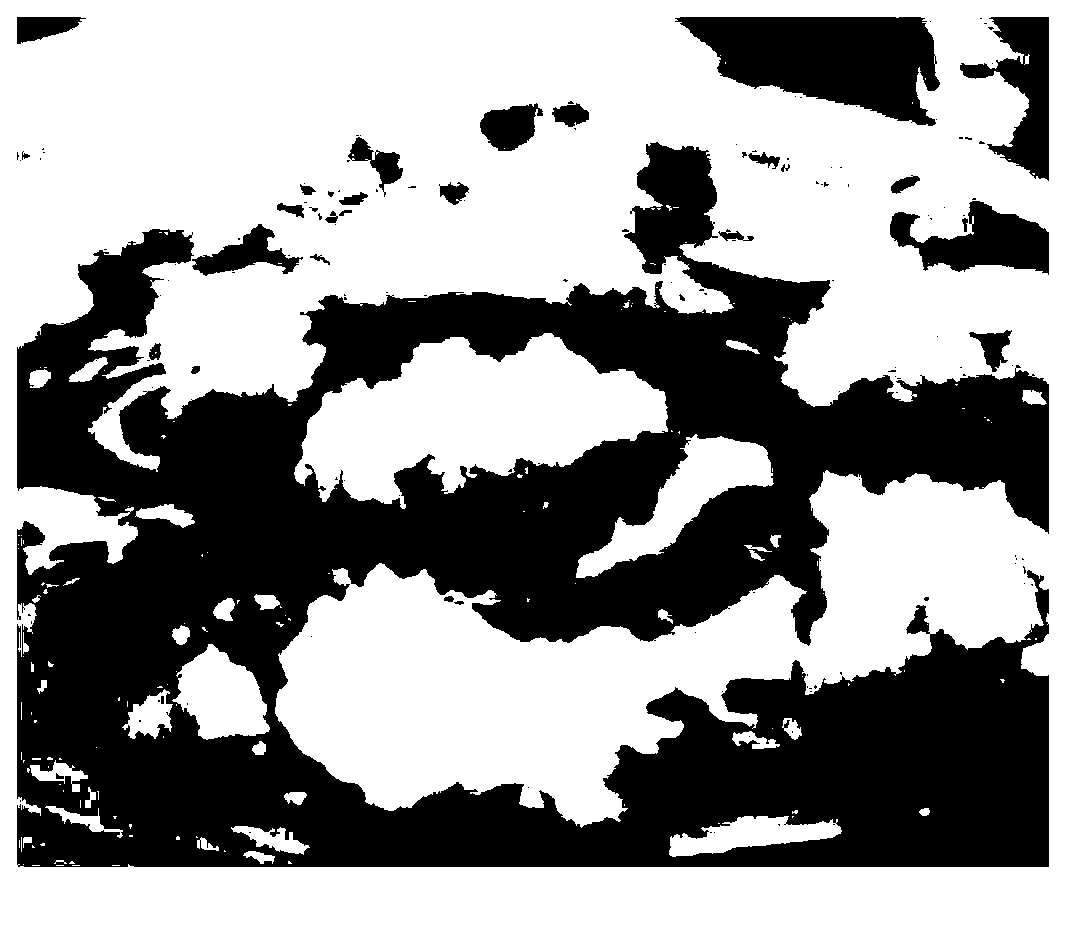Method for efficiently propagating dendrobium by using roots and culture medium of dendrobium
A technology of culture medium and induction medium, which is applied in the field of plant tissue culture, can solve the problem of not providing callus induction rate, differentiation rate, seedling rate and reproduction coefficient, not excluding tissues originating from non-roots, and unexplained clustering buds and the origin of protocorms to achieve the effects of low cultivation costs, cost and energy savings, and a simple process of inducing seedlings
- Summary
- Abstract
- Description
- Claims
- Application Information
AI Technical Summary
Problems solved by technology
Method used
Image
Examples
Embodiment 1
[0046] The roots of Dendrobium officinale test-tube plantlets were used as materials, cut into sections, inoculated, and cultured in dark at a temperature of about 25°C (25±2°C) to induce embryogenic callus. The embryogenic callus induction medium was MS (Murashige and Skoog, 1962)+6-BA (6-benzylaminoadenine) 0.6mg / L+PIC (4-amino-3,5,6-trichloropyridine-2-acid) 3mg / L+sucrose 30000mg / L+agar powder 5000mg / L. After 15 days, the root segment expanded and began to produce embryogenic callus, such as figure 1 As shown, after 60 days, the root segment can be covered with embryogenic callus, and the callus induction rate is about 70%.
[0047] Transfer the obtained embryogenic callus to the medium for protocorm induction to carry out the differentiation and proliferation of the protocorm. The protocorm induction medium is MS+CPPU(N-(2-chloro-4-pyridyl)-N '-phenylurea) 0.1mg / L+NAA (naphthaleneacetic acid) 0.01mg / L+sucrose 30000mg / L+agar powder 5000mg / L. The culture conditions are 16...
Embodiment 2
[0050] Take the root of the test-tube plantlet obtained in Example 1 as material, cut it into sections and inoculate it, culture in dark at a temperature of about 25°C, induce embryogenic callus, and the embryogenic callus induction medium is MS+6-BA0.6mg / L+PIC3mg / L+sucrose 30000mg / L+agar powder 5000mg / L, the callus induction rate is above 80%. Transfer the induced embryogenic callus to the callus subculture medium for dark culture at a temperature of about 25°C, subculture once every 25 days, and the embryogenic callus can proliferate approximately twice after each subculture . The callus subculture medium is MS+6-BA0.5mg / L+PIC2mg / L+sucrose 30000mg / L+agar powder 5000mg / L.
[0051] Transfer the embryogenic callus obtained from two subcultures to the protocorm induction medium for protocorm differentiation and proliferation. The protocorm induction medium is MS+CPPU0.1mg / L+NAA0.01mg / L+sucrose 30000mg / L+agar powder 5000mg / L, the culture conditions are 16 hours of light per da...
Embodiment 3
[0054] The root of the test-tube seedling of Dendrobium huoshanense is used as material, cut into sections and then inoculated, cultured in dark at a temperature of about 25°C, to induce embryogenic callus, and the embryogenic callus induction medium is MS+6-BA0.6mg / L+ PIC3mg / L + sucrose 30000mg / L + agar powder 5000mg / L, the callus induction rate is over 70%. Transfer the induced embryogenic callus to the callus subculture medium for dark culture, subculture for 25 days, and the temperature is about 25°C, the embryogenic callus can proliferate by more than 1 times. The callus subculture medium is MS+6-BA0.5mg / L+PIC2mg / L+sucrose 30000mg / L+agar powder 5000mg / L.
[0055] Transfer the embryogenic callus obtained from the subculture to the protocorm induction medium for protocorm differentiation and proliferation. The protocorm induction medium is MS+CPPU0.1mg / L+NAA0.01mg / L+sucrose 30000mg / L+agar powder 5000mg / L, the culture conditions are 16 hours of light per day, the temperatu...
PUM
 Login to View More
Login to View More Abstract
Description
Claims
Application Information
 Login to View More
Login to View More - R&D
- Intellectual Property
- Life Sciences
- Materials
- Tech Scout
- Unparalleled Data Quality
- Higher Quality Content
- 60% Fewer Hallucinations
Browse by: Latest US Patents, China's latest patents, Technical Efficacy Thesaurus, Application Domain, Technology Topic, Popular Technical Reports.
© 2025 PatSnap. All rights reserved.Legal|Privacy policy|Modern Slavery Act Transparency Statement|Sitemap|About US| Contact US: help@patsnap.com



